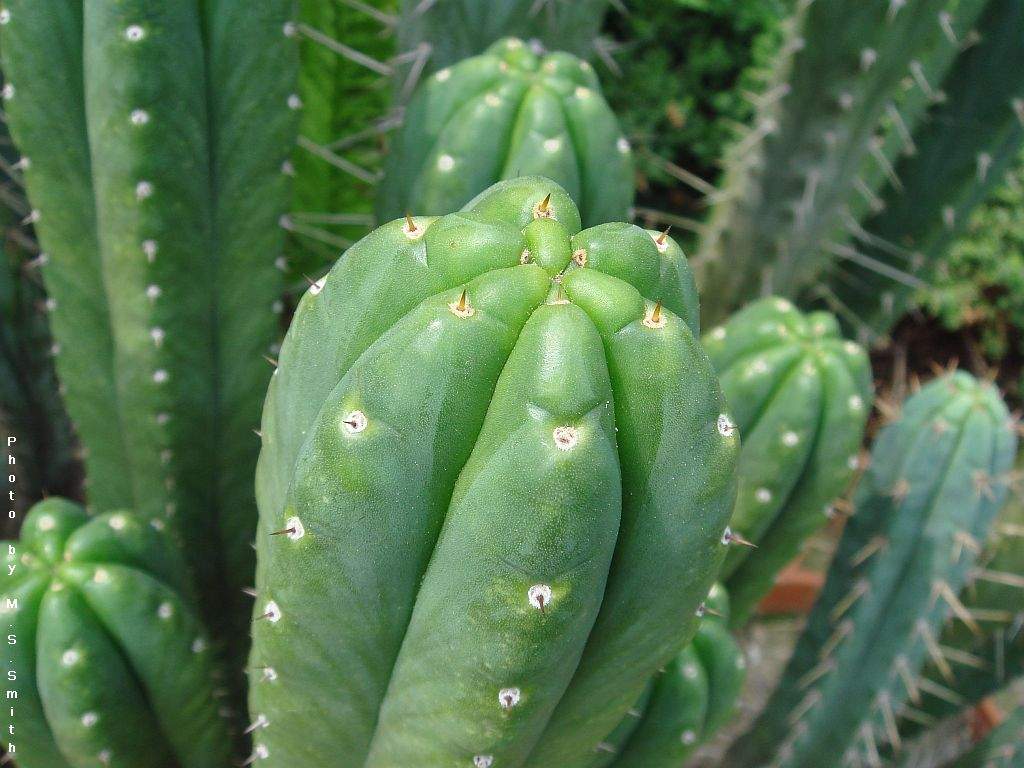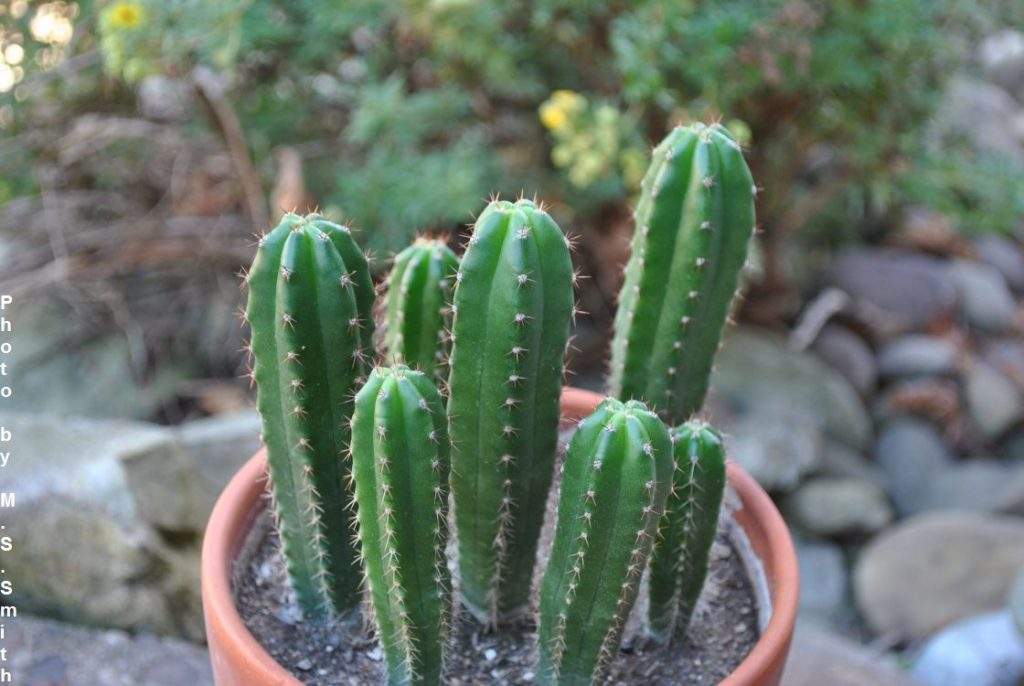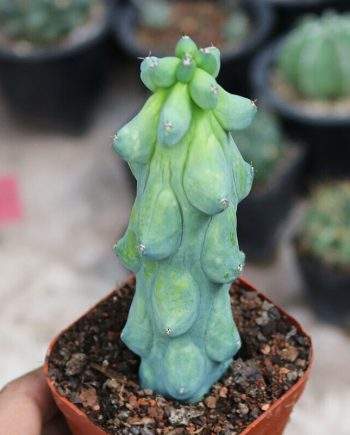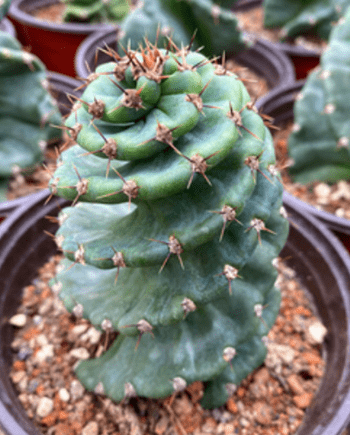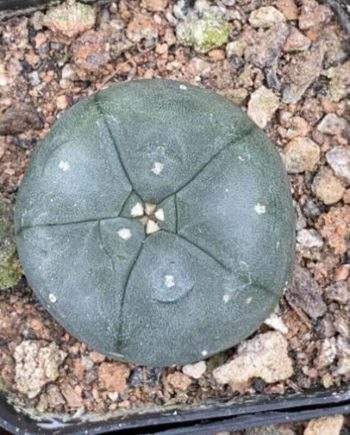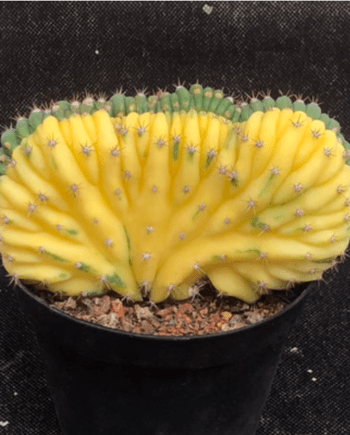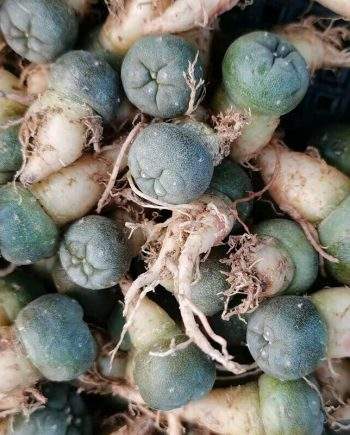commonly known as San Pedro cactus, is a species of cactus native to the Andes region of South America, particularly in countries such as Peru and Ecuador. This cactus has been cultivated and used for various purposes for centuries, primarily due to its psychoactive and ornamental qualities.
Here are some key characteristics and information about Trichocereus pachanoi:
- Appearance: San Pedro cactus is a tall, columnar cactus that can grow to heights of 3 to 6 meters (10 to 20 feet) or more. It typically has multiple branches or “ribs” along its length, which are lined with small, harmless spines. The cactus is usually bright to dark green and has a waxy, warty appearance. This cactus pups from the base, According to reports, can withstand temperatures as low as 10°F (-12°C) for brief durations.
- Trichocereus pachanoi, also known as the San Pedro cactus, was first discovered and has a long history of indigenous use in the Andes region of South America. While the exact date of its initial discovery is not well-documented, it is believed that indigenous people in the Andes have been using the cactus for its psychoactive and medicinal properties for thousands of years.
San Pedro cactus holds particular importance among the indigenous peoples of the Andes, including the Chavín, Moche, and Chimu cultures. It is often used in shamanic and healing rituals for its psychoactive properties, primarily due to the presence of mescaline, a powerful hallucinogenic compound.
The historical and cultural significance of San Pedro cactus is well-documented in the art, pottery, and textiles of these ancient civilizations. Archaeological evidence suggests that its use dates back to pre-Columbian times, making it one of the oldest known hallucinogenic plants.
The name “San Pedro” is believed to have been introduced by Spanish colonizers, who often associated indigenous sacred plants with Christian saints. In this case, it is named after Saint Peter (San Pedro in Spanish), possibly to facilitate the conversion of indigenous people to Christianity. However, the indigenous names and traditions surrounding the cactus vary across different cultures in the Andes.
The cactus was brought to the attention of the Western world through the writings of various explorers and ethnobotanists who visited the Andes in the 19th and 20th centuries. One of the notable accounts is that of the American anthropologist and botanist Richard Evans Schultes, who documented the use of Trichocereus pachanoi and its role in indigenous cultures.
Trichocereus pachanoi continues to be of interest to researchers, ethnobotanists, and individuals interested in plant-based spirituality and traditional healing practices. It is now cultivated and used not only in its native regions but also in other parts of the world, where it is valued for its ornamental beauty, cultural significance, and the psychoactive experiences it can provide. - Ornamental Plant: The San Pedro cactus is also valued for its aesthetic appeal, making it a popular choice for ornamental landscaping in regions with a suitable climate. Its striking appearance and relatively easy cultivation have contributed to its popularity among cactus enthusiasts and gardeners.
- Botanical Classification: Trichocereus pachanoi belongs to the Cactaceae family and is part of the Trichocereus genus. It shares some similarities with other cactus species, such as Trichocereus peruvianus and Trichocereus bridgesii, which also contain mescaline.
- Propagation: San Pedro cactus can be propagated from cuttings, which are typically taken from a mature plant’s branches. These cuttings are allowed to callus for a few days to prevent rotting and then planted in well-draining soil. They can be grown both indoors and outdoors in suitable climates, with full sun exposure.
- Legal Status: The legal status of Trichocereus pachanoi varies from one place to another. In some areas, it is considered legal to cultivate and possess the cactus for ornamental purposes, while the extraction and consumption of mescaline may be regulated or prohibited. It is essential to check local laws and regulations regarding its cultivation and use.
- Ethical Considerations: Many enthusiasts and users of San Pedro cactus are concerned about sustainable and ethical practices. Overharvesting and poaching of wild cacti have led to conservation concerns. As a result, some people advocate for the responsible cultivation and ethical harvesting of San Pedro cacti.
Trichocereus pachanoi, or San Pedro Cactus, is a fascinating and versatile plant with a rich cultural history, ornamental appeal, and psychoactive potential. When considering its use for any purpose, it’s crucial to be aware of local laws and environmental ethics to ensure responsible and sustainable practices.
Info on the Trichocereus or Echinopsis debate here
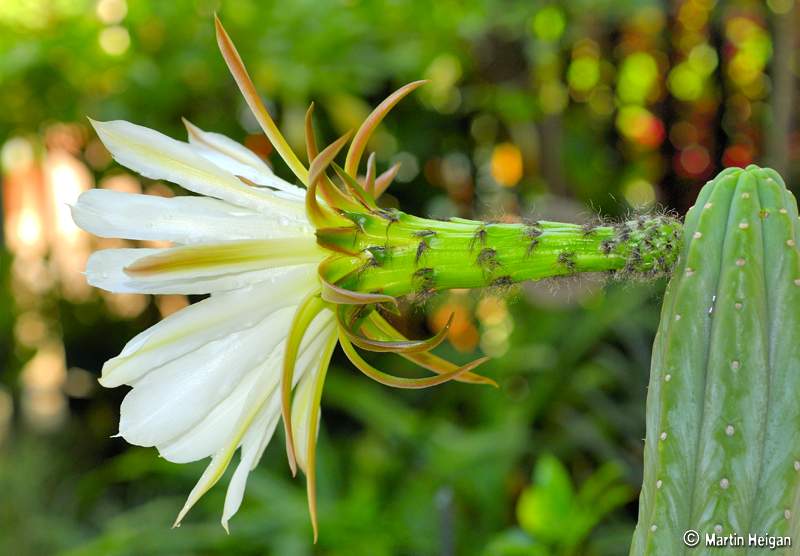
Traditional use of Trichocereus Pachanoi today
The traditional use of Trichocereus pachanoi, continues in certain indigenous communities in South America, particularly in the Andes region of Peru and Ecuador. San Pedro has a long history of being used in shamanic and healing rituals by various indigenous cultures. Its traditional use remains a vital part of their spiritual and cultural practices. Here’s an overview of how San Pedro is traditionally used today:
Spiritual and Shamanic Practices: Indigenous peoples, such as the Quechua and the Chavín, have a deep-rooted tradition of using San Pedro in shamanic ceremonies. Shamans, known as “curanderos” or “ayahuasqueros,” prepare and administer the cactus to individuals seeking healing, insight, or spiritual experiences. San Pedro is considered a sacred and powerful plant that can facilitate communication with the spirit world and provide guidance and healing.
Healing and Divination: San Pedro is often used for its therapeutic and divinatory properties. It is believed to have the ability to cure physical and spiritual ailments. San Pedro ceremonies may involve participants seeking relief from various conditions, such as emotional trauma, depression, or physical illness. The shaman leads the ceremony and administers the cactus, guiding participants through the experience.
Purification and Cleansing: San Pedro is also used for purification and cleansing rituals. Participants may ingest the cactus to purify the body, mind, and spirit. The experience is thought to cleanse negative energies and provide a sense of renewal and balance.
Connection to Nature: Many indigenous cultures in the Andes hold a deep reverence for nature, and San Pedro is seen as a means to connect with the natural world. It is believed to enhance one’s appreciation and understanding of the environment, leading to a more harmonious relationship with nature.
Community and Tradition: San Pedro ceremonies are often communal experiences, bringing people together to share in the ritual. These ceremonies are an integral part of the community’s cultural and spiritual identity, fostering a sense of unity and shared tradition.
It’s important to note that the traditional use of San Pedro cactus is deeply rooted in the cultural and spiritual practices of specific indigenous groups. The ceremonies are conducted with great respect for the plant, the spirits, and the participants’ well-being. Indigenous communities are working to preserve and protect their traditional knowledge and practices, as well as the natural habitats where San Pedro cacti grow.
In contemporary society, there is also a growing interest in the traditional and spiritual use of San Pedro cactus among individuals from various backgrounds seeking personal and spiritual growth. This has led to a broader awareness of and respect for the plant and its cultural significance. However, it’s essential for those interested in participating in San Pedro ceremonies to do so with respect for the traditions and the communities that have maintained these practices for generations.
Some Products
-
Penis Cactus – TBM Clone B$37.00
-
Myrtillocactus Geometrizans cv. Fukurokuryuzinboku$38.00
-
Product on saleCereus forbesii cv. SpiralisOriginal price was: $45.00.$42.00Current price is: $42.00.
-
Lophophora williamsii 2cm-4cm$36.00 – $156.00
-
Trichocereus Pachanoi Monstrose Cristata Variegata (TPMCV)$62.00
-
Lophophora Williamsii (Peyote) 1cm-2cm 5pcs$53.00
